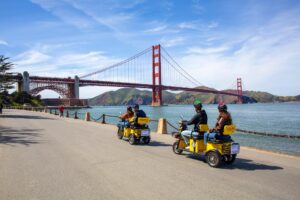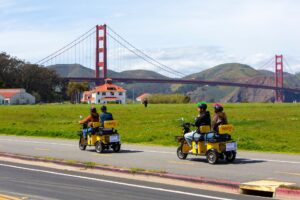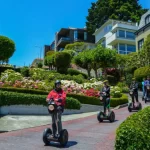Exploring the San Francisco Botanical Garden at Strybing Arboretum
If you’re a nature enthusiast or just looking for a tranquil escape within San Francisco, the San Francisco Botanical Garden at Strybing Arboretum is a hidden gem that should be on your must-visit list. With a rich history dating back to the 1930s, this 55-acre oasis within Golden Gate Park is a testament to the city’s commitment to preserving and showcasing the incredible diversity of plant life from around the world. In this article, we’ll dive into the history and current status of this botanical wonderland.
A Glimpse into the Garden’s History
The Visionary Beginnings
The roots of the San Francisco Botanical Garden can be traced back to the 1880s when John McLaren, the park supervisor, first laid out plans for this green sanctuary. However, due to insufficient funding, the dream of the garden didn’t start taking shape until 1927 when Helene Strybing, a generous benefactor, left a substantial bequest. Planting began in 1937, fueled by WPA funds and local donations, and the Arboretum officially opened its doors in May 1940.
The Role of the San Francisco Botanical Garden Society
While the garden is officially managed by the city of San Francisco, the San Francisco Botanical Garden Society has played a vital role in its development. Formed in 1955, the society has been instrumental in providing educational programs, managing volunteers, curatorial staff, and more. Their efforts have not only sustained the garden but also led to significant enhancements and renovations over the years.
Transformations Through the Decades
The garden has evolved continuously, with key milestones in each era:
- 1970s: The Moon-Viewing Garden was designed, and the Helen Crocker Russell Library of Horticulture, Northern California’s largest horticultural library, opened its doors.
- 1980s & 90s: Director Walden Valen revised the plant collections plan, focusing on taking advantage of the mild coastal climate.
- 2000s: Director Scot Medbury led the renovation of seven gardens, including the Southeast Asian Cloud Forest, a pioneering addition.
- 2010s & 2020s: The garden celebrated its 75th Anniversary, introduced the annual Flower Piano event, and witnessed a record-breaking visitor day. Exciting developments are ongoing, with projects like the New Nursery and Pagoda Landscape Project taking shape.
Exploring the Garden’s Collections
One of the most captivating aspects of the San Francisco Botanical Garden is its diverse plant collections. Here are some of the specialized areas you can explore:
- Mediterranean: Ideal for plants from various parts of the world due to the mild Mediterranean climate.
- California Native: Discover the beauty of California’s native flora.
- Redwood Grove: Stroll through a grove of majestic coast redwoods.
- Chile, South Africa, Australia: Explore gardens dedicated to flora from these regions.
- Japanese Moon-Viewing Garden: Experience a tranquil Japanese design.
- Cloud Forests: Travel to meso-America and southeast Asia without leaving San Francisco.
- Specialty Collections: Don’t miss the Ancient Plant Garden, Succulent garden, Dwarf Conifer garden, and more.
What’s Next for the Garden?
As the San Francisco Botanical Garden continues to flourish, there are exciting developments on the horizon. The Gardens of Golden Gate Park, including the Botanical Garden, Conservatory of Flowers, and Japanese Tea Garden, have a strategic plan to further enrich the visitor experience. Projects like the New Nursery and Pagoda Landscape are just the beginning of what’s to come.
Plan Your Visit
When you’re ready to explore this botanical wonderland, remember these practical details:
- Location: The San Francisco Botanical Garden is situated within Golden Gate Park, with two entrances: the Main Gate near Ninth Avenue and the Friend (North) Gate on Martin Luther King Jr. Drive.
- Operating Hours: The Main Gate opens at 7:30 AM and closes at the last entry, while the Friend (North) Gate opens at 9 AM and also closes at the last entry.
- Public Tours: Consider joining a 90-minute walking tour with a Garden Docent to make the most of your visit. These tours are free and included with admission.
As you immerse yourself in the San Francisco Botanical Garden’s natural beauty, you’ll not only connect with the incredible diversity of plant life but also with the rich history that has shaped this horticultural marvel.
For more information and updates, you can visit the official San Francisco Botanical Garden website.
Info provided by: SF Rec and Park Department







